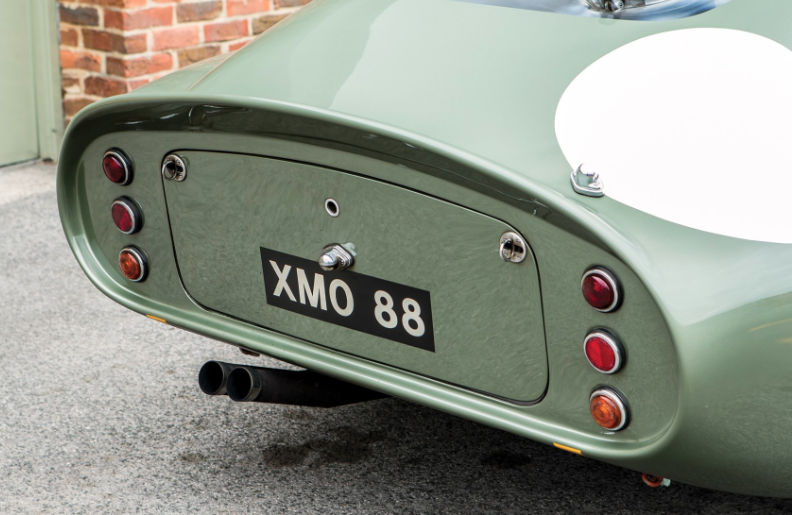With a lifetime record of 100 starts and 100 losses, thoroughbred Zippy Chippy might possibly be the most lovable loser in the history of racing sports.
A close second? Another powerful beast we’d gladly keep in our stable at home despite its losing record, the DP215 prototype from Aston Martin.


Designed to take to the track as an entry at the 24 Hours of Le Mans in 1963, the project which became known as DP215 was started two months before the race was set to take place and the engineering department tasked with building it was given a shoestring budget of just £1,500.
Despite the lack of funding, the Aston Martin Racing Department was able to cook up a build that earned a place in the Le Mans record books – even though it didn’t finish the race.


Powered by a four-liter version of the six-cylinder twin plug engine Aston Martin used in the DP212 model which competed at Le Mans in 1962, DP215’s steel box-frame chassis had to be modified in order to accommodate engine No. 400/215/01.
Driven to improve the car’s balance and prevent its rear end from lifting up at high speed, chief engineer Ted Cutting used wind tunnel testing to fine-tune DP215’s aerodynamics.


During testing at Le Mans, Cutting’s automotive genius was on full display as DP215 became the first car to officially break the 300 kilometer per hour (186.4 MPH) barrier when it hit 198 miles per hour on the Mulsanne Straight in the middle of a practice run.
However—as DP215’s drivers Phil Hill and Lucien Bianch found out at Le Mans—great power comes with great responsibility, as well as the need for a five-speed transmission that can handle it.


Unfortunately for Hill, Bianchi, and Aston Martin, the heightened torque of No. 400/215/01 was too much DP215’s DBR1-type CG537 transmission to handle and it blew after just two hours while the car was in first place and beating Ferraris by as much as 12 seconds per lap.
Adding insult to injury, DP215 was forced to retire from a race while leading for the second time when its transmission blew once again at the Reims-Gueux the following month.


Shortly thereafter, the Aston Martin Racing Department folded and DP215 was subsequently sold for scrap metal following an accident with a van during night testing on the M1 motorway.
Eventually acquired by an Aston Martin collector in 1992, Cutting was brought in to help restore the car to its original state, including reuniting it with No. 400/215/1 and putting in a 1,000-piece replica of DP215’s lovable-yet-losing transmission.


Now, with fewer than 300 miles on its odometer since its rebuild began in ’92, DP215 is crossing the block at RM Sotheby’s Monterey auction in August.
Estimated to sell for as much as $25 million, it’s possible the price of DP215 may surpass the $22.6 million the DBR1 race car—the most expensive British car ever sold at auction—brought in last year at Monterey Car Week.
“I’ll be surprised if [the DP215] sells for more than the DBR1,” said Hagerty auction editor Andrew Newton. “But then again, in that room there’s gonna be those buying Ferrari GTOs, and significant Ford GT40s. There’s going to be so much money in that room.”
Find out more about Monterey here and about DP215 in the video below.
This article appeared in an InsideHook newsletter. Sign up for free to get more on travel, wellness, style, drinking, and culture.

























